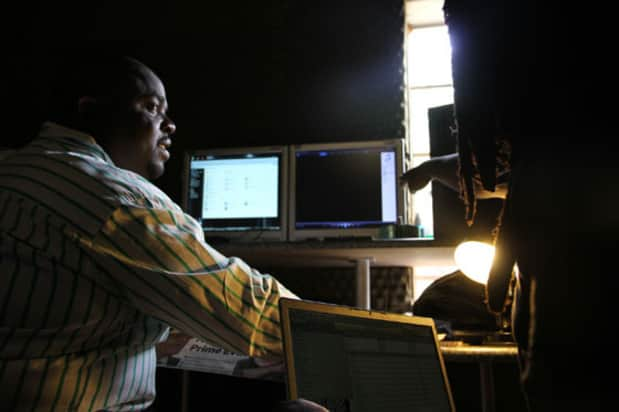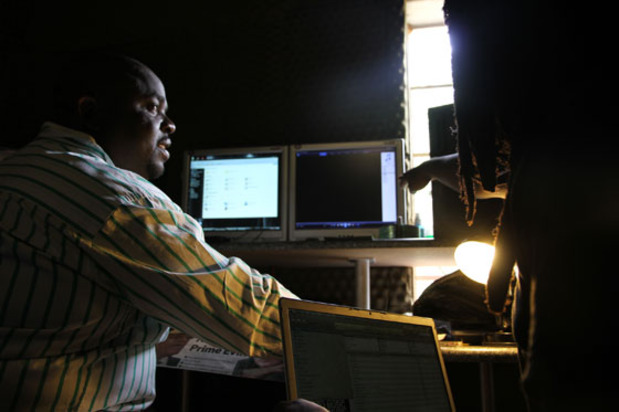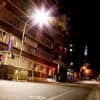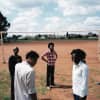You may have noticed over the past few weeks that I have been repping the Africa 2010 theme hard lately. So when Wills Glasspiegel—an Afropop Worldwide producer who also oversaw The Very Best’s Warm Heart of Africa release for Green Owl—told me that he was embarking on an epic road trip with our mutual dog Tshepang Ramoba of the BLK JKS to dig up examples of a previously unheard of electronic genre, I immediately got at him about an exclusive. What he brought back far exceeded my expectations.
Electrified Shangaan music is shockingly fast, yet weirdly meditative. Quadruple-time tempos alternate with one-drop chord changes and slippery shifts of emphasis. It is so sped up that sometimes the individual beats blur into more of a vibration than a rhythm and it gets somehow atmospheric. This makes it extremely DJ-friendly in the sense that it’s almost impossible to find a beat that doesn’t blend, even potential trainwrecks become Steve Reich-ian phase poems. The main tropes seem to be helium voices, “Nude Photo”-like synths and frenetic clown-costume dance routines. But there are more traditional South African melodic elements that ensure it will not be totally alien to people who’ve heard the “Indestructible Beat of Soweto” or the lush melodies of Ladysmith Black Mambazo—just 99% alien.
Anyway, not only did Wills come with a cache of raw, brilliant music from which I constructed this week’s blend but also photos, videos and war stories. It’s all laid out below in what I believe to be a wholly original piece of Ghetto Palms scholarship.
GP90 Shangaan electro blend:
H.R. Baloyi, “Always”
Unknown artist, “Vomaseve?”
Nozinja Productions, “Nwa Mdungazi”
Nozinja Productions, “Kulungwani”
Nozinja Productions, “Tshemba”
Unknown artist, “Track 6”
Nozinja Prodictions “Nwa Pfundla”
GP90 Shangaan Electro blend
A MAN CALLED DOG: The hunt for Shangaan electro by Wills Glasspiegel
Last year at SXSW, I made quick friends with South African rockers BLK JKS, cooking pap and spinning Lijadu Sisters on the stereo at the Green Owl Ranch where we were all staying. A few months later, Janka Nabay (I’m his manager) opened for them in New York. After the show, Tshepang Ramoba, the drummer from BLK JKS, tipped me off to the style he calls “Shangaan electro,” which sounded to my ears exactly like a South African version of Janka’s bubu music.
Before the year was out, I was on a plane to Johannesburg. The plan was to hang with the JKS and track down Shangaan music to license for a digital and vinyl release in the U.S. We agreed to hunt for the music together and Tshepang hosted me on his couch while were on the case. Our first stop was a studio in a squatter camp outside Johannesburg. A retired policeman was in charge…kind of. His place was a mess, cloistered into one tiny corner of a half-constructed floor over a tavern. We scoured a few old PCs and found a bit of what we were hoping to find, but the music was disorganized, the ex-cop unreliable. Tshepang and I decided to keep looking for another source.
Our next stop was nine hours north of Jo’burg in a small town called Malamolele. After visiting Tshepang’s family in Limpopo, we rolled into town on a sunny December afternoon, Shangaan jams blasting from every car and shop we passed—Malamolele was like the Kingston or Havana of Shangaan. The main goal of the trek was to find George Maluleke, the godfather of the style, who still plays live with a band—his sons are his dancers, his four wives sing backup. We asked the gas station attendant if he’d heard of him. “Are you serious?" he asked. "Everyone knows that guy.”
Indeed, Mr. Maluleke was a big man in Malamolele. We phoned him and were instructed to meet him by “his parking spot” in front of the local grocery—apparently we could just ask anyone where his spot was. We did just that and moments later were shaking hands with the man himself. Mr. Maluleke is a straight-up guy with a religious star (Zion Christian Church style) on his front pocket. Musically, his style celebrates rural, traditional, porch-front Africa. He told us he had property outside the city and invited us back to his home.
After a few cold Cokes in one of his rondavel huts, we soon realized that releasing George Maluleke’s music in the U.S. (one of our goals for the project) wasn’t going to work. It turned out that his sound wasn’t exactly what we were looking for—no sampled vocals, no midi keyboards, no found sounds. In short all Shangaan, no electro. We left with plenty of mangos (served by his daughter in the traditional style, on her knees, no eye contact), and a bag of masonja (dried mapani worms), but no 50/50 license. I dug the worms—Tshepang cooked them spicy – but I was starting to get anxious about finding the Shangaan music. Friends in SA kept asking how the quest was going and 2010 was almost upon us.
In early January, Tshepang and I finally struck gold at a city-center record shop. We found a DVD for sale by the group, TsheTsha boys—the same group we’d watched on youtube months before in Brooklyn—and there was a phone number on the back. A man called Dog answered our call. He seemed interested in our project and invited us to his home studio in Soweto.
Dog is a large man with a large smile. He’s got a lot to be happy about – a pretty new wife (his first, I believe), a BMW and Mercedes in his driveway and a collection of golden music awards (South African Grammys). Dog is a certified hitmaker and cassette player. Recording in a studio just behind his kitchen, he was the first producer to electrify Shangaan music in the early 2000s, the first to add samples, the first to play with midi keyboards, first to make music videos. In the two weeks before we arrived, he’d sold 20,000 units of the song, “Nsati Wa Mina”—on cassette. (Video below. “Nsati Wa Mina” means "My Wife,"--and yes, that’s a golf course in the title screen).
Dog’s music is hyper-local—made by and for the Shangaan people who live between Johannesburg and Limpopo. Shangaan people (also called Tsonga) are some of the most marginalized people in South Africa. Plenty of South Africans scoff at these shimmering electro gems, if they’ve heard them at all. Dog has never received attention for his music from people outside the Shangaan community. There’s no Wikipedia entry on him. He hadn’t even seen the youtubes until we pulled them up on his computer (“450,000 hits” he said in awe. “What if those were sales?”) but for us (for Radioclit, for Dutty Artz, and others) Shangaan electro is on par with anything coming out of Brooklyn, or Luanda.
Tshepang and I plan to release some Shangaan electro in the next few months, and to drop remixes before the BLK JKS play the National Stadium this summer at the World Cup. Stay tuned, and thanks to Eddie for opening up this space to us. -Wills Glasspiegel
Note: Wills is currently in Kenya making field recordings for the Dig For Fire TV production company. You can find more of his work on his Outside Music blog.



